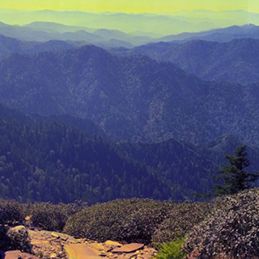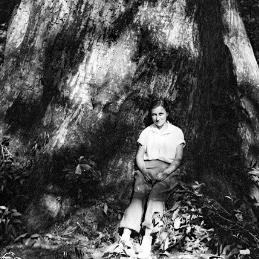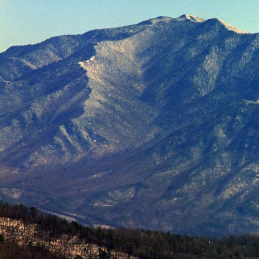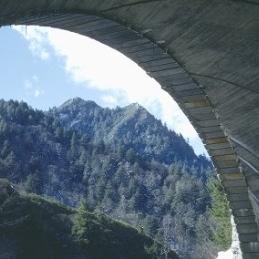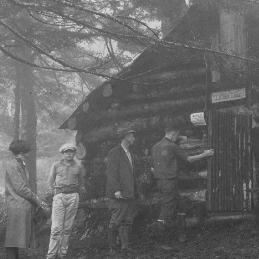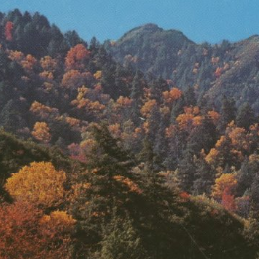Browse
"Pyrenomycetes of the Great Smoky Mountains National Park. I. Diatrype fr. (Diatrypaceae)." Fungal Diversity 17 (2004): 191-201.
"Procedures to Enhance the Success of a Black Bear Reintroduction Program." Bears: Their Biology and Management 9 (1997): 66-77.
"Predicting Rare Plant Occurrence in Great Smoky Mountains National Park, USA." Natural Areas Journal 23, no. 3 (2003): 229-237.
"Nutrient Cycling in Red Spruce Forests of the Great Smoky Mountains." Canadian Journal of Forest Research 21, no. 6 (1991): 769-787.
"A Novel Monopartite dsRNA Virus from Rhododendron." Archives of Virology 155, no. 11 (2010): 1859-1863.
"New Species of Small Dictyostelids from the Great Smoky Mountains National Park." Mycologia 97, no. 2 (2005): 493-512.
"Modeling the Distributions of Species and Communities in Great Smoky Mountains National Park." Computers and Electronics in Agriculture 27, no. 1 (2000): 389-392.
"Lepiota marculans, an Unusual Mushroom Rediscovered after 105 years." Southeastern Naturalist 10, no. 2 (2011): 267-274.
"The Larvae of Three Neartic Diptera of the Family Psychodidae." Journal of the New York Entomological Society 67, no. 1 (1959): 39-50.
"An Individual-Based Model for Feral Hogs in Great Smoky Mountains National Park." Natural Resource Modeling 28, no. 1 (2015): 18-36.
"Historic PM2.5/PM10 Concentrations in the Southeastern United States - Potential Implications of the Revised Particulate Matter Standard." Journal of the Air & Waste Management Association 49, no. 9 (1999): 1060-1067.
"Herbaceous Species Composition and Richness of Mesophytic Cove Forests in the Southern Appalachians: Synthesis and Knowledge Gaps." The Journal of the Torrey Botanical Society 141, no. 1 (2014): 39-71.
"A GIS Model to Predict Black Bear Habitat Use." Journal of Forestry 95, no. 8 (1997): 6-12.
"Fungal Communities and Functional Guilds Shift Along an Elevational Gradient in the Southern Appalachian Mountains." Microbial Ecology (2017): 1-13.
"Fossil Pollen Records Forecast Response of Forests to Hemlock Woolly Adelgid Invasion." Ecography 32, no. 5 (2009): 881-887.
"Foliar Response of Red Spruce Saplings to Fertilization with Ca and Mg in the Great Smoky Mountains National Park." Canadian Journal of Forest Research 23, no. 1 (1993): 89-95.
"Exploring Interactions Between Pollutant Emissions and Climatic Variability in Growth of Red Spruce in the Great Smoky Mountains National Park." Water Air and Soil Pollution 159, no. 1 (2004): 225-248.
"Examination of Forest Recovery Scenarios in a Southern Appalachian Picea – Abies Forest." Forestry 81, no. 2 (2008): 183-194.
"Evaluation of Regional-Scale Receptor Modeling." Journal of the Air & Waste Management Association 60, no. 1 (2010): 26-42.
"Effects of Terrain Smoothing on Topographic Shielding Correction Factors for Cosmogenic Nuclide-Derived Estimates of Basin-Averaged Denudation Rates." Earth Surface Processes and Landforms 34, no. 1 (2009): 145-154.
"Effects of Sampling Conditions on DNA-Based Estimates of American Black Bear Abundance." The Journal of Wildlife Management 77, no. 3 (2013).
"Diel Movements of Black Bears in the Southern Appalachians." Bears-Their Biology and Movement 5 (1983): 11-19.
"Denitrification Potential in Sediments of Headwater Streams in the Southern Appalachian Mountains, USA." Journal of the North American Benthological Society 20, no. 4 (2001): 505-519.
"The Courtship Behavior of the Santeetlah Dusky Salamander, Desmognathus santeetlah Tilley (Amphibia: Caudata: Plethodontidae)." Ethology 90, no. 3 (1992): 236-246.
"Correlates of Success for On-Site Releases of Nuisance Black Bears in Great Smoky Mountains National Park." Wildlife Society Bulletin 30, no. 1 (2002): 104-111.


